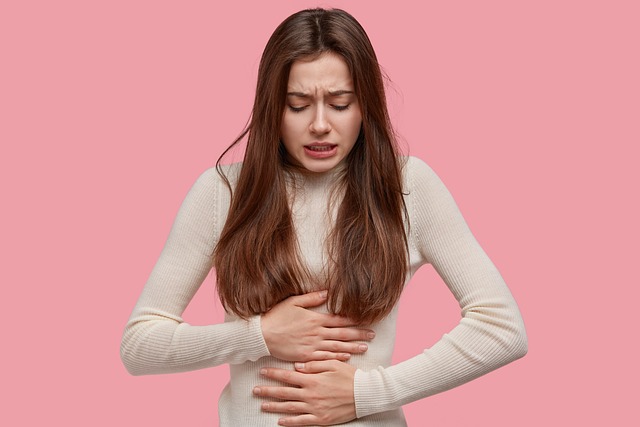Symptoms of endometritis are very similar to symptoms of many other diseases, so accurate diagnosis is not easy at all. In this article, we'll discuss all about endometritis.
What is endometritis and its causes?
Endometritis is a condition caused by an infection in the endometrium (lining of the uterus). The endometrium becomes inflamed, and irritant. Endometritis is a different condition from endometriosis. However, some symptoms are very similar between them.
An infection of the uterus induces Endometritis. It is due to chlamydia, gonorrhea, tuberculosis infection, or a mix of normal vaginal bacteria.
It occurs mostly after abortion or childbirth. It is also more common after a long labor or C-section.
Risk Factors
People who gave birth recently or had procedures including the cervix are more exposed to endometritis.
Some examples of these procedures:
- Endometrial biopsy.
- Dilation and evacuation (D&E).
- Dilation and curettage (D&C).

Symptoms of endometritis
The main symptoms of endometritis:
Vaginal bleeding
Abnormal vaginal bleeding during or after sex, or outside normal menstrual cycle.
Abnormal vaginal discharge
Thick yellow, gray, or brown discharge with a foul odor.
Pelvic and uterine pain
It is a persistent pain in the pelvic area, varying from mild to severe.
Pain during urination.
Sometimes endometritis shows pain during urination, burning sensation, and an increasing frequency of urination.
Discomfort during sex
Endometritis causes pain during sexual intercourse, which makes this activity difficult.
Fever
As an indication of an infection, it is sometimes accompanied with chills.
Other symptoms of endometritis are uncommon, such as
discomfort with bowel movements, including constipation, vomiting, and swelling of the lower abdomen.
Differentiation between endometritis and other conditions
Symptoms of endometritis usually overlap with other conditions such as:
Pelvic inflammatory disease (PID)
It is a bacterial infection that affects the upper reproductive organs involving the ovaries, fallopian tubes, and the uterus.
Cervicitis
It is an inflammation of the cervix only. Usually, it is caused by sexually transmitted infections.
Ectopic pregnancy
It is a pregnancy outside the uterus, however it causes severe pain in one side of the abdomen.
Endometriosis
It is caused by the growth of pieces of endometrium outside of the uterine cavity such as ovaries or fallopian tubes. Its pain is usually associated with cyclical pain in menstruation.
Uterine fibroids
It is a fibrous growth in the uterus.
Adenomyosis
It is a condition in which the lining of the uterus grows into the uterine muscle wall.
Ovarian cysts
It is a fluid-filled sac that is formed on the ovaries. It is characterized by sudden onset of pain specifically on one side.
Urinary tract infection
It is an infection in the Urinary system causing painful urination and pelvic pain.
How to diagnose endometritis
You have to go to your healthcare provider if you have any of the symptoms of endometritis that we listed.
Your doctor needs to perform some tests to confirm the diagnosis.
Pelvic examination
Your doctor palpates the Pelvic area with one or two fingers to look for any changes in these areas or feeling pain due to pressure.
Testing vaginal fluid
looking for bacterial or sexually transmitted infections such as chlamydia or gonorrhea in vaginal secretion.
Biopsy of uterine tissue
Endometrial biopsy to check the presence of abnormal cells; taking a small tissue sample from the lining of the uterus.
Laparoscopy
To look at the uterus more closely.
Blood tests
High levels of white blood cells (WBC) or erythrocyte sedimentation rate (ESR) indicate the presence of infection or inflammation.
Ultrasound
Ultrasound may show the lining of the uterus is thicker or more irregular.
However, it is not enough to diagnose alone, as many conditions can cause these abnormal changes.

Treatment for symptoms of endometritis
Good treatment depends on a good diagnosis. Usually, doctors prescribe a suitable antibiotic.
If you are one of the risk factor groups of endometritis, treatment should involve intravenous fluid and rest is very important.
You should stop any sexual contact until relieving, you should also increase water intake and eat a healthy diet rich in vitamins, minerals, and omega-3 to accelerate healing time.
Mostly, this condition is relieved by suitable antibiotics. Rarely, Untreated endometritis leads to serious infection and complications such as Infertility, the spread of the disease in the pelvic cavity leading to pelvic peritonitis, pelvic or uterine abscess formation, septicemia, and septic shock.
Read more about Endometriosis Treatment to Get Pregnant
Prevention
The first step in preventing the symptoms of endometritis is preventing the incidence of infection that leads to inflammation of the endometrium layer.
To help in preventing endometritis you have to:
- Safe sex practices by using condoms to reduce the risk of sexually transmitted infection. Notice that, if your sexual partners have STIs make sure of his treatment.
- Good proper hygiene, during menstruation.
- Early and proper treatment of urinary tract of infection, vaginal infection, or STIs to prevent the spreading of the infection in the uterus.
- Postpartum or miscarriage good care, and a good follow-up to ensure proper healing.
In the end, Symptoms of endometritis are very similar to other conditions in symptoms. So, accurate diagnosis needs more tests plus symptoms, such as pelvic examination, endometrial biopsy, and laparoscopy.
Symptoms of endometritis include vaginal bleeding, abnormal vaginal discharge with a foul odor, pelvic and uterine pain, swelling of the abdomen, pain during urination, discomfort with bowel movements including constipation, discomfort during sex, and fever.
To prevent the incidence of endometritis you have to prevent infection as possible as you can.
Read more about:


You must be logged in to post a comment.